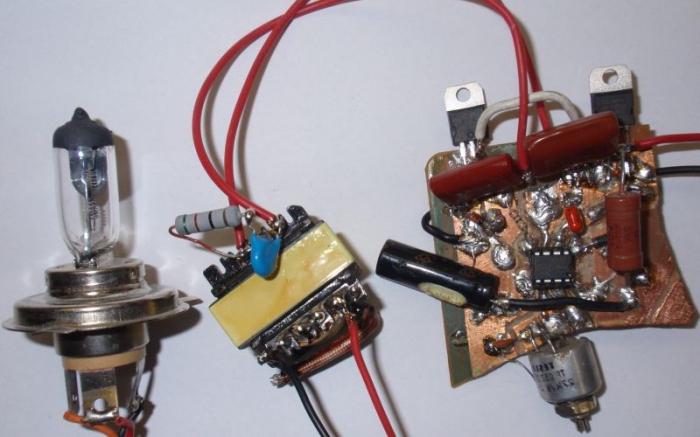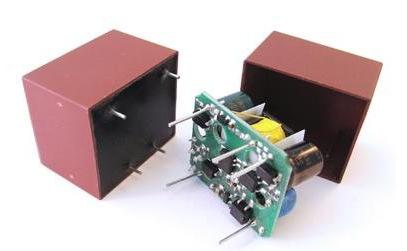To significantly improve the safety conditions of electrical systems and lighting circuits, in many cases it is recommended to use lamps with a voltage significantly lower than that used in a standard network (220 V). Typically, such lighting is arranged in basements, bathrooms, cellars and other wet rooms. For these purposes, so-called halogen lamps are used today, the operating voltage of which is 12 V. For the supply of lamps of this kind, a device such as an electronic transformer is used. This device is able to transform the voltage of 220 V into 12 V (optimal for the functioning of a halogen lamp).
If you look at the electronic transformer, you can understand that its external device is quite simple. It is a small plastic or metal box, from which there is a conclusion of four wires: two incoming (with the inscription 220 V), and two output (with the inscription 12 V).
The principle of operation of such a device as an electronic transformer is quite simple. Brightness control is carried out using thyristor regulators (they are called dimmers). These regulators are located on the high voltage (input) side. Many devices such as electronic transformers can be connected to the same dimmer at the same time. Naturally, there are typical schemes for switching on such devices without regulators. Keep in mind the important condition: the electronic transformer must not be started without load. You should also pay attention to power. Modern leading companies produce electronic transformers with power from 60 to 250 watts.

The device itself is a push-pull oscillator on a half-bridge circuit. Two shoulders of this bridge are transistors. The other two shoulders are capacitors. That is why such a bridge is called a half-bridge. Voltage is applied to one diagonal, which is rectified by a diode bridge. A load is connected to another diagonal. To control the operation of the transistor diagonal in their circuit, the windings of the feedback transformer are connected. The voltage rectified by the bridge will charge the capacitor, and when the voltage on the capacitor reaches the limit, the dynistor will open and a pulse will be generated that starts the current converter.

A device such as an electronic transformer has a lot of undeniable advantages. Firstly, mention should be made of small overall dimensions and light weight. This provides an excellent opportunity to install an electronic transformer virtually anywhere (even in hard-to-reach places). Some modern lighting devices, which are specially designed for working with halogen lamps, already contain several built-in electronic transformers in advance. Such schemes have found their application in everyday life, for example, in the design of a chandelier. Electronic transformers are now installed in furniture, for example, in cabinets, to create the illumination of hangers and shelves.
But this is not all areas of application of such a device as an electronic transformer. For example, there are some improvements that often do not even require opening the case, however, they allow you to create a switching power supply from an electronic transformer (UPS).